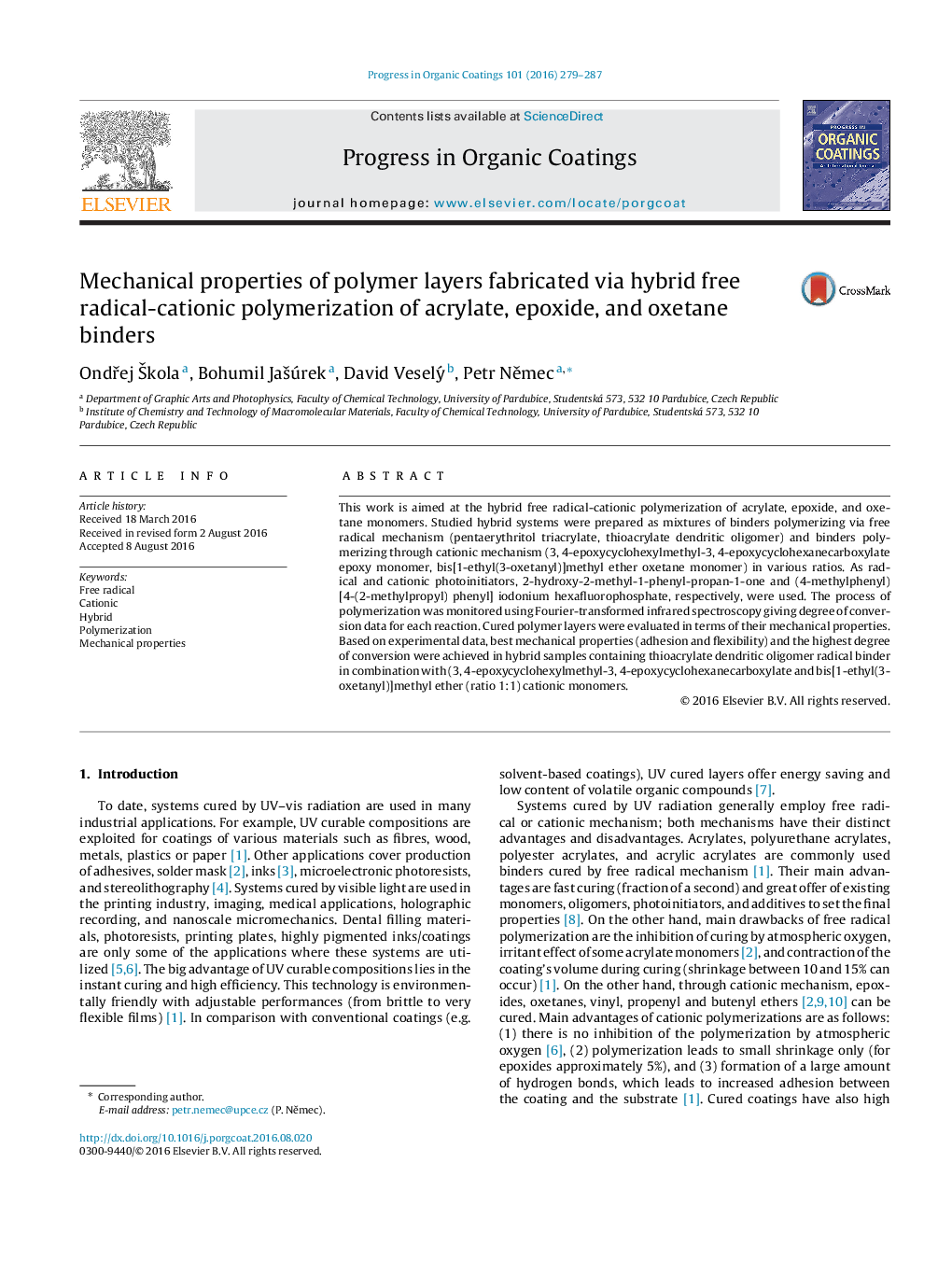| Article ID | Journal | Published Year | Pages | File Type |
|---|---|---|---|---|
| 7106351 | Progress in Organic Coatings | 2016 | 9 Pages |
Abstract
This work is aimed at the hybrid free radical-cationic polymerization of acrylate, epoxide, and oxetane monomers. Studied hybrid systems were prepared as mixtures of binders polymerizing via free radical mechanism (pentaerythritol triacrylate, thioacrylate dendritic oligomer) and binders polymerizing through cationic mechanism (3, 4-epoxycyclohexylmethyl-3, 4-epoxycyclohexanecarboxylate epoxy monomer, bis[1-ethyl(3-oxetanyl)]methyl ether oxetane monomer) in various ratios. As radical and cationic photoinitiators, 2-hydroxy-2-methyl-1-phenyl-propan-1-one and (4-methylphenyl) [4-(2-methylpropyl) phenyl] iodonium hexafluorophosphate, respectively, were used. The process of polymerization was monitored using Fourier-transformed infrared spectroscopy giving degree of conversion data for each reaction. Cured polymer layers were evaluated in terms of their mechanical properties. Based on experimental data, best mechanical properties (adhesion and flexibility) and the highest degree of conversion were achieved in hybrid samples containing thioacrylate dendritic oligomer radical binder in combination with (3, 4-epoxycyclohexylmethyl-3, 4-epoxycyclohexanecarboxylate and bis[1-ethyl(3-oxetanyl)]methyl ether (ratio 1:1) cationic monomers.
Related Topics
Physical Sciences and Engineering
Chemical Engineering
Process Chemistry and Technology
Authors
OndÅej Å kola, Bohumil JaÅ¡úrek, David Veselý, Petr NÄmec,
